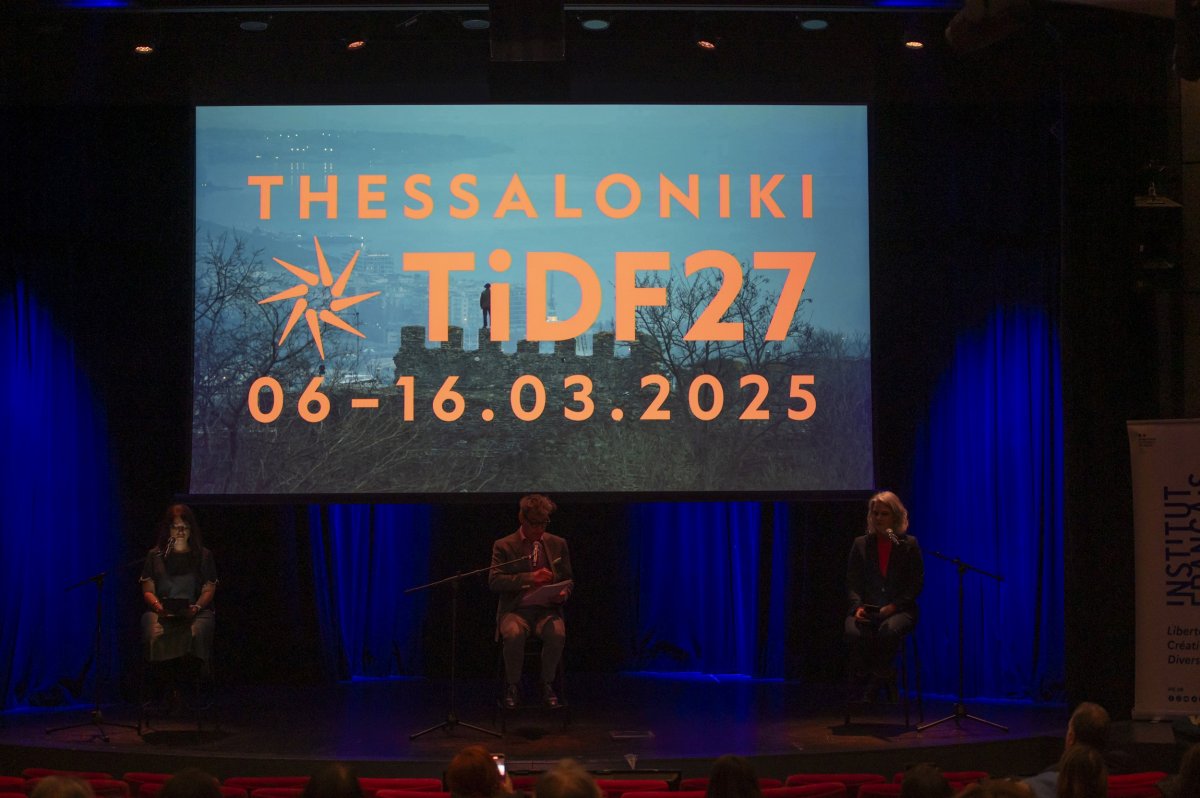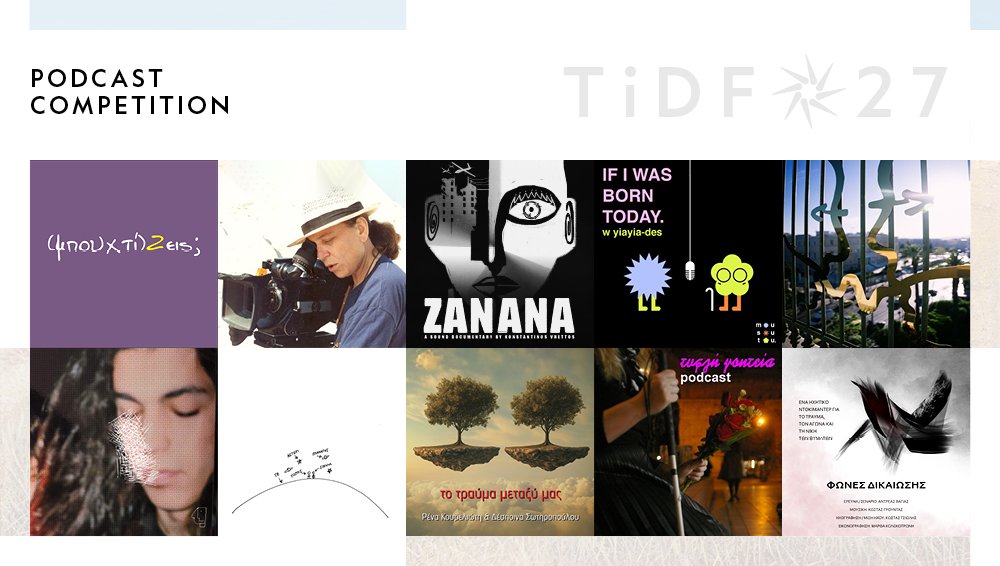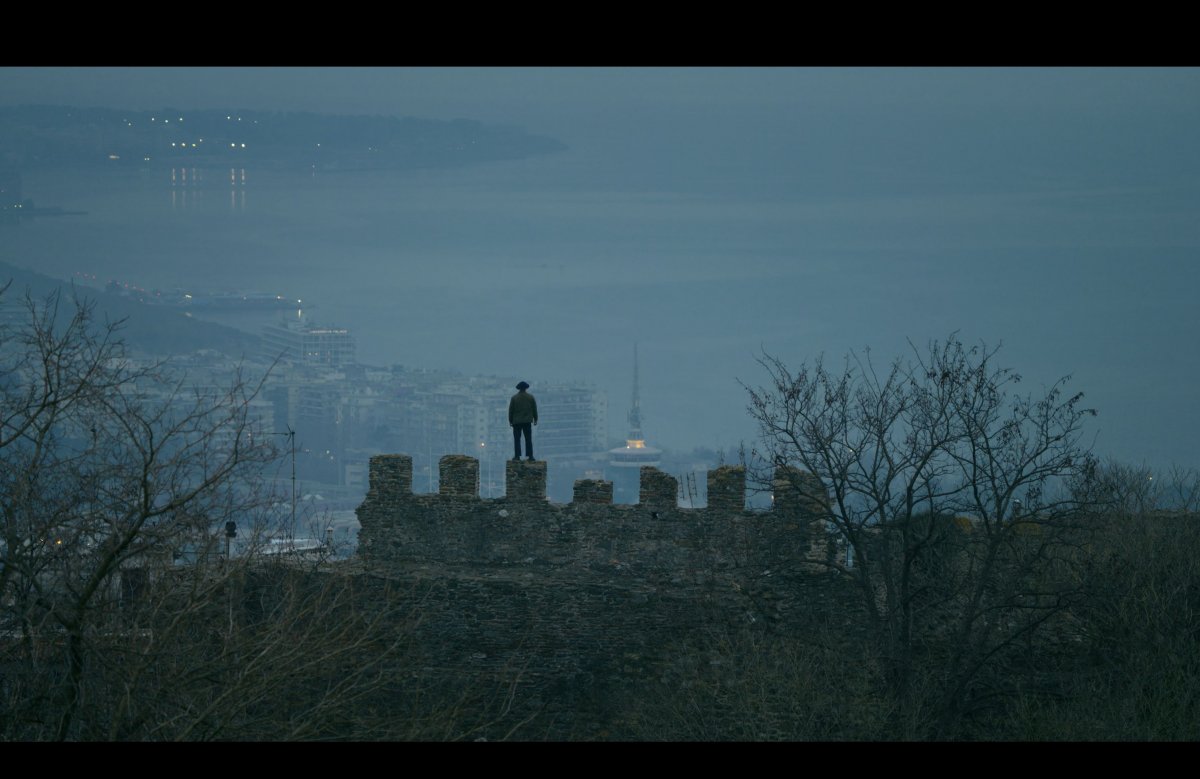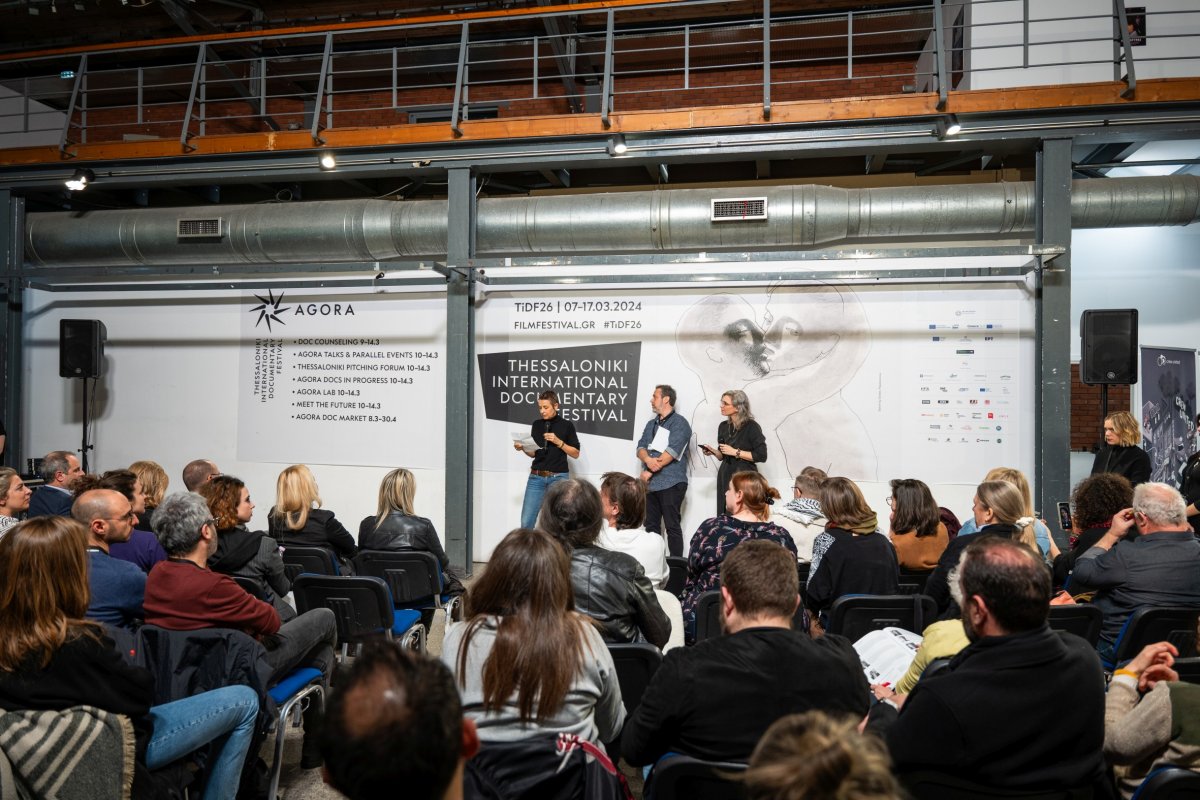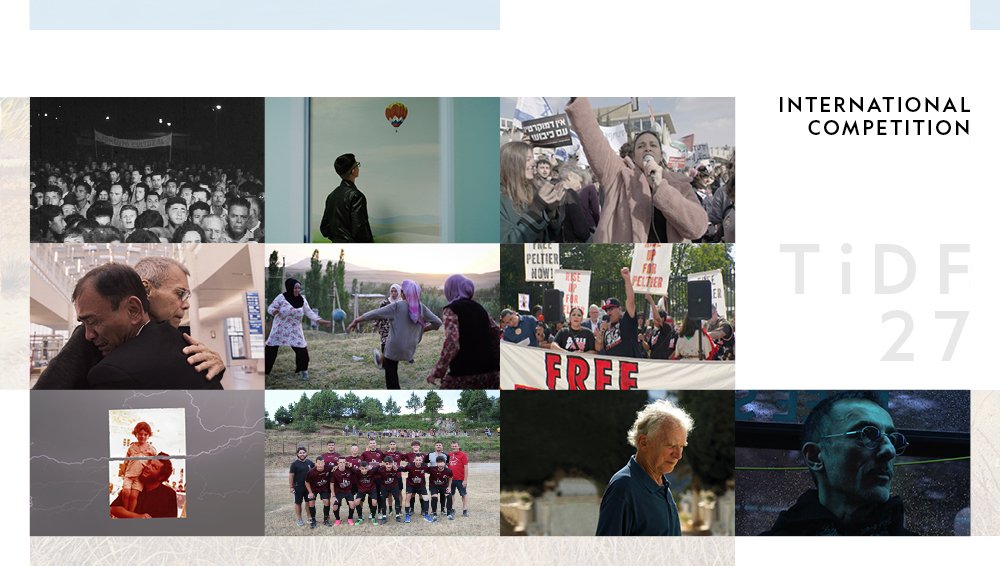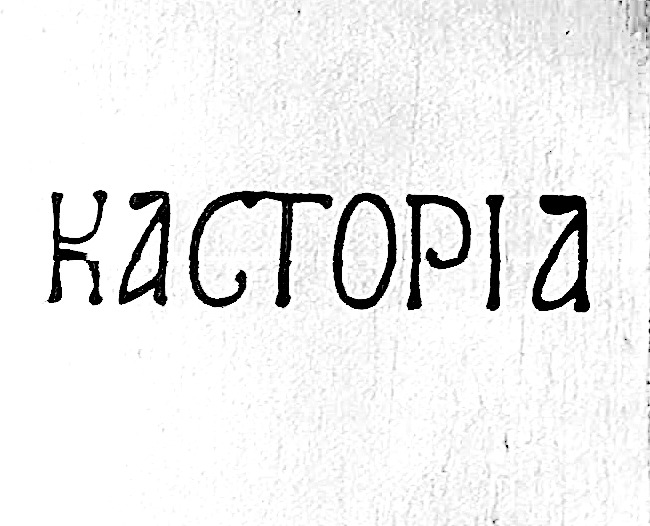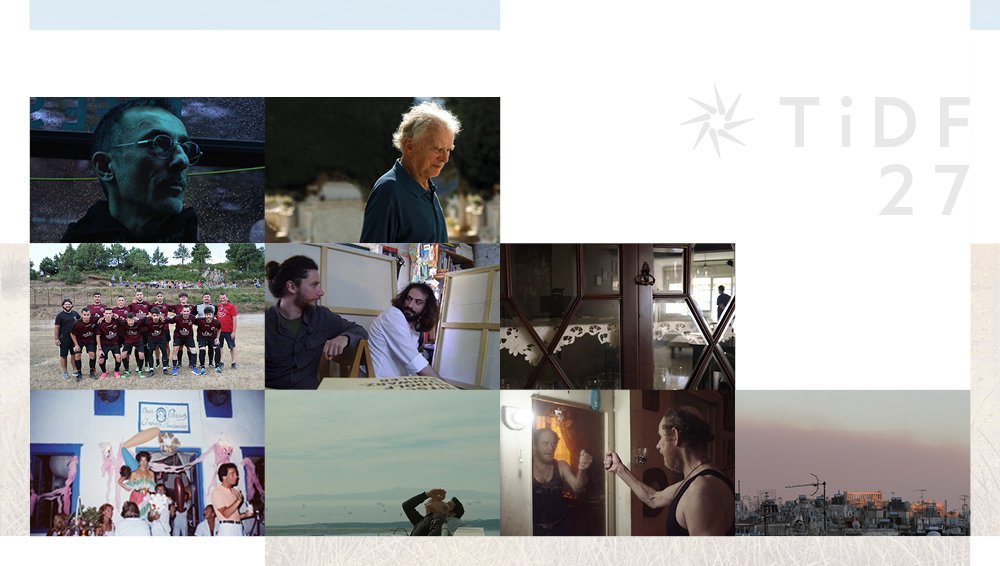EUGENIO CABALLERO MASTERCLASS
Distinguished Mexican art director and production designer Eugenio Caballero opened TIFF’s masterclass series on Saturday, November 14th at the John Cassavetes Theater (Port Warehouse 1). During the masterclass, coordinated by movie critic and journalist Giorgos Krassakopoulos, Caballero shared the secrets of his art with the audience, talking about his approach to cinema, his method and the role of new technologies in the Seventh Art.
Early in the discussion, Eugenio Caballero explained his personal views concerning the essence of filmmaking. «To me, a movie has more to do with narration, than imagery. There are three steps: Presenting believable characters, solid casting and enhancing the message, the sentiment you wish to convey to the audience. My role has to do with this last step: Everything in the set that doesn’t look realistic and believable must be removed, so that the power of the original idea remains intact », said Caballero.
Referring to Pan’s Labyrinth, the movie that won him an Oscar in 2007 for best achievement in art direction, Eugenio Caballero remembered how he came to work with filmmaker Guillermo del Toro: «We met in the Cannes Festival, where another movie of mine, Cronicas, participated. Although Guillermo had not written the script for Pan’s Labyrinth as yet, I realized that the project was a huge challenge for me, so I started doing my homework and preparing for it, while he started working on the script». The entire set for the movie was built from scratch, explained Caballero: «While looking for location to shoot the film, we were unable to find anything satisfactory. Luckily, the producers agreed to construct the sets entirely, which is not always the case». Commenting on some of the sketches he had created for Pan’s Labyrinth, Caballero analyzed the importance of several details: «For the young heroine of the movie, reality was more hostile compared to the imaginary world, despite the latter bristling with monstrous creatures – the real monsters were present in her real life. This is why her real world sets we constructed were slightly oversized compared to the imaginery world ones - so that the girl would feel safer surrounded by the smaller ones. Furthermore, in the movie’s imaginary world, everything had a round shape without any angles, so that the protagonist would feel as if she was in her mother’s womb».
Talking about his work method, Eugenio Caballero stressed that a crucial and most creative part of filmmaking is pre-production: «From the very beginning, you need to set out a framework for planning the production. The more prepared you are, the less problems you will face during the actual production. Feature films especially are like boats: You cannot change course after you have set off”. Furthermore, Eugenio Caballero revealed that he always looks for historic references to incorporate in his work: «I have studied History of Art, which is why I believe that data and background research are very important. In one occasion, I had been working for a year on a movie that never made it to production. I believe, however, that this complex and multifarious process is indispensable and has a lot to teach you». He also noted that experience is not enough for an artist to overcome his insecurities when beginning a new project: «I have made twenty movies, but every time I start from base one and wonder ‘what am I supposed to do now?’. Even an Oscar cannot help you with that. I want to prepare things as thoroughly as possible, because when you are satisfied with your work, you find the strength to face any problem ».
During the masterclass, Eugenio Caballero also talked about his contribution in Jim Jarmousch’ new film, The Limits of Control: «I am happy I had the opportunity to work both with Jim and cinematographer Christopher Doyle. Our aim was to make audiences realize there are many alternative ways to look at reality». Stressing the importance of colors in this movie, he noted: «We used a clear color palette. Our hero sets off from Madrid, a colorful city, then goes on to Seville, a city with pale, earthly undertones, and for his next destination we picked Almeria, a Spanish city with very soft colors. This alteration of colors helps us underline that our main character is moving like a ghost ».
As far as new technologies are concerned and their role in his work, the Mexican artist was clear: «I make ample use of new technologies, I don’t think I have ever made a movie without any special effects. I love combining real sets with digital effects. In Pan’s Labyrinth for example, we had two digital birds flying over a plaster set. You can make magic out of the simplest of elements». He added: «The possibilities opened up today by new technology are limitless. Even in the digital age, when the entire decor is digital, it is crucial that you have a vision. It’s not the tools you have at your disposal that matter themselves; it is knowing how to use them».
Addressing a question, Eugenio Caballero stated that he prefers the “art director” title to the production designer one, explaining, however, that “in America, the art director ranks second and his duties are strictly technical». He went on to say that it is important that the production designer and cinematographer have a good chemistry, adding: «I really enjoy working with new filmmakers, who are making only their first or second movie, because they usually possess an energy that more experienced directors have lost. They are full of jest. On the other hand, however, new filmmakers don’t always have clear ideas or make full use of the arsenal at their disposal».
Addressing a question by the audience concerning his influences and favorite artists, Eugenio Caballero said: «I admire artists from many different fields: colleagues of mine, photographers, painters… However, if I had to pick one production designer, that would be Dean Tavoularis, because I love his work with Francis Ford Coppola in may movies that our considered classics. I was also drawn by the way Nathan Crowley approached his work in The Prestige. He was a fellow nominee for the 2007 Oscar award and I was certain he would be the winner, having “dressed” the movie with a wonderful and hard to create sepia. As far as classical artists are concerned, my biggest influence has been Francisco Goya. Looking at his paintings, one can understand what brush he used or the texture of the paint. In my opinion, these are qualities also needed in a movie set».
Asked about his reactions when watching one of his films, Eugenio Caballero said: «I am deeply moved and brought to tears in the first viewing. I get carried away by emotion. The second time, I pay close attention to the technical details». Closing the masterclass, Eugenio Caballero revealed that he creates a scrapbook for every movie he works on. There, he notes his ideas, sketches, and everything else that might prove useful. «Many of my ideas turn out to be inappropriate or redundant, but some times they prove themselves useful in future projects. My desire is to develop each and every idea, moving a step forward each time», he explained. For the masterclass finale, the Mexican artist had a pleasant surprise in store for his audience, presenting the scrapbook he made for Pan’s Labyrinth.




